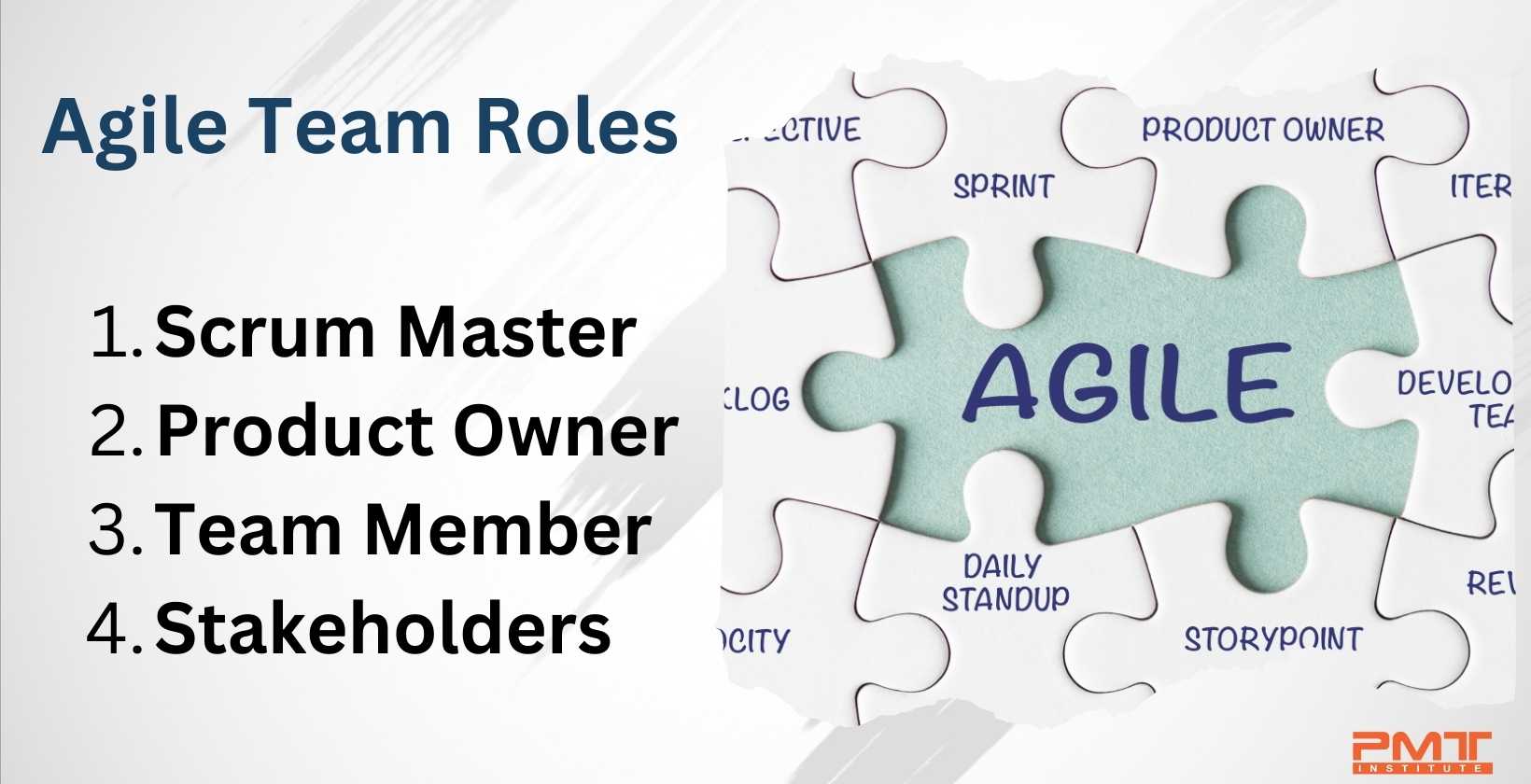Agile Team Member Roles and Responsibilities Matrix
Published:
Updated:

Diving into the roles of Agile teams, it's essential to understand what Agile teams are and why they're practically the way forward when it comes to strategy and technique. An agile team is focused on decreasing team size while increasing skill and value. A cross-functional team of 5-10 people can deliver a product without requiring any extra workforce and contribute to high success rates.
The project is divided into shorter segments and using an incremental approach, the agile team works in synchronization with each other to deliver the product. The agile strategy focuses on maintaining a range of concepts, including instant software delivery and integration of concepts between business people and developers. It is centered around driven, reliable employees.
The process of agile roles is achieved via Scrum or Kanban methods. They both use a board to visualize work to do and in-progress work and end with the done column.
Agile consists of the following elements that make it stand out:
Sprints
These are brief periods where products are conceived, created, evaluated, and produced. They are goals broken down within the projects.
Daily standup
Focusing on daily goals, it starts with discussing the work that has been achieved so far, what they're aiming to work on, and any Q&As the team might have.
Stream-lined reviews
For consistent check-ins and the smooth running of things, built-in safeguards are placed. Reviews ensure that the quality of work is smooth and that any errors are minimized. After completing tasks and sprints, the work is reviewed by peers and management.
Agile Team Roles and Functionality
It's crucial to define the agile roles that team members have to carry out so that it becomes easy for them to be proactive in their work. An Agile development team's most important agile roles can be simplified as follows:
Scrum Master
Sometimes known as the “Team Captain” or the “Team Lead’, the Team captain supports the team, supervises them, and leads them in a way that they are shielded from office politics and other distractions. This helps them focus on the work only and be competent in the work that they are focusing on.
Scrum Master
Sometimes known as the “Team Captain” or the “Team Lead’, the Team captain supports the team, supervises them, and leads them in a way that they are shielded from office politics and other distractions. This helps them focus on the work only and be competent in the work that they are focusing on.
Functionality
- They function as process monitors, feedback providers, and role models for young team members.
- Their function also includes managing daily communication, keeping the visual work board up-to-date, and ensuring the smooth running of daily operations.
- Providing team members with constructive criticism so that they can improve their performance.
- Adding value by protecting team member's time.
- Ensure that the product owner is giving input throughout the process.
- Leading the team in discussion and ensuring that all queries are addressed.
- Creating a bond between the team, so they feel a general team spirit.
- Getting rid of hurdles for the team members.
Team Member
The team members usually make up the team with programming and software development skills necessary for agile roles. It is also necessary to pinpoint that agile extends beyond the realm of IT and may refer to anyone who contributes something worthwhile to the team that helps in achieving objectives.
These team members are at the very heart of agile teams, and the team is composed of members with competence in a wide range of fields. It consists of development specialists who have hands-on involvement in the development process of applications, such as coders, designers, and QA testers. When placing team members for agile roles, it is crucial to consider their skill set, delivery timing, and testing. The team is cross-functional, and members usually collaborate so that the agile team becomes self-sufficient.
The development team members are at the heart of the agile project development process. The team is made up of members with competence in a variety of fields. The development team in software development is made up of persons who have hands-on involvement in application development, such as programmers, data engineers, authors, designers, and testers. It is necessary to consider the essential skill set required for effective product development, testing, and delivery at each sprint while assembling this team.
As a result, the development team members become self-sufficient and can effectively complete product development independently. The team is also cross-functional and self-organizing. The development team members might elect to add a new member or create new expertise if required.
Functionality
- Team members are the key element of any team. They can be UX/UI designers, engineers, coders, or any other specialist, according to the nature of the project.
- Team members have a given agile, and their main task is to complete the piece of the puzzle they have to solve in the major working of the project depending on their talents.
- Providing team members with constructive criticism so that they can improve their performance.
- The tasks entrusted to the team members usually consist of deadlines, and they must follow the schedule.
- Team members are usually independent and inventive in their work and use their abilities and skills to the best use.
- It is important for team members to trust, support, and mentor one another. Their work is closely related, and it helps if they make the most of each other's advantages and help find flaws simultaneously.
- It is instrumental in communicating with different team members because, most of the time, it is required to operate swiftly and efficiently.
- Team members often challenge success and develop new strategies to promote consistent growth. This terrific quality ensures continuous improvement of the product.
Product Owner
Product owners are key players in the game because they comprehensively understand the products and the business. They tend to be the product's top defenders and supporters. If there is any problem with the product, they're the first to think of it, and in the same way, when the mission and vision for the product are achieved, they're the first to celebrate. Equipped with this knowledge, the product owners are better able to prioritize certain changes needed in the agile team and prosper further.
They define the product story and make sure the concept and integrity of the idea behind the product are upheld. An executive stakeholder, the product owner, is usually responsible for ensuring two-way communication, informing the team members and the team lead of important events for product development.
A product owner can only sometimes be technically skilled to deliver project outcomes when working on a technological product. They don't have to engage in the product's coding or architecture; instead, they can focus on important things like efficiency, business plans, and stakeholder management. To effectively and efficiently achieve the anticipated advantages and benefits, certain product owners may need to communicate with the team members and comprehend the technological parts of a firm.
Functionality
- The product owner needs to have outstanding communication skills because their job focuses on motivating team members to participate in and accomplish product development by investing in their skills. In other words, product owners can modify the process along the way, which means they must communicate with their teammates.
- Product owners are responsible for coming up with the final product's concept and have expert knowledge of how the product will integrate into the strategic and long-term goals of the company.
- Understanding the latest trends and adapting to the demands of the customers.
- Product owners are at the mercy of customers; therefore, a product owner serves as a liaison between the team and the customers, and any feedback is conveyed through them.
- Another important function is developing product backlog and maintaining it, which is carried out by the product owners. And they focus on examining deliverables themselves before a product launch or delivery.
Stakeholders
Stakeholders have a significant hold on how the products are developed and modified, and their feedback affects how the agile team roles are designed. They consist of people who will impact the product and those who will be affected by its outcome.
Stakeholders come in various forms; they could be people inside a company or outside entities and agencies. Stakeholders usually change based on the kind of project that is at hand. Some examples of stakeholders are customers, executives, the development team, sponsors, lawyers, etc. The opinions of these people ultimately shape the end product for the company.
Functionality
- Stakeholders aid in the coordination between developing the product and keeping it consistent with customer demands and corporate objectives.
- Stakeholders are essential when comprehending a firm's difficulties and communicating them to the developers.
- All stakeholders should be taken into the loop when working with agile teams. Inclusivity eliminates the possible risks that can arise when developing a product.
- Stakeholders provide critical information via feedback about a product, which drives the product's efficiency. During sprints, the product owner collaborates with various stakeholders to understand where their requirements are met and where they need to catch up. The comments offered during sprints benefit the product's overall process of agile development.
Conclusion
Agile team roles are a fundamental part of Agile methodology. They provide structure and ensure that each member understands their role, ultimately leading to the project's overall success. Furthermore, assigning team members roles that align with their strengths and abilities can increase productivity.

